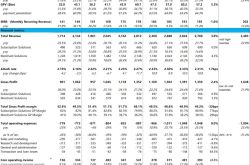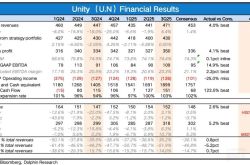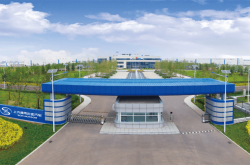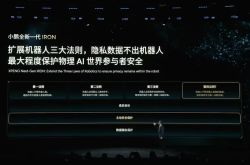2025: AI Agents on the Verge of Transformation
![]() 02/05 2025
02/05 2025
![]() 622
622
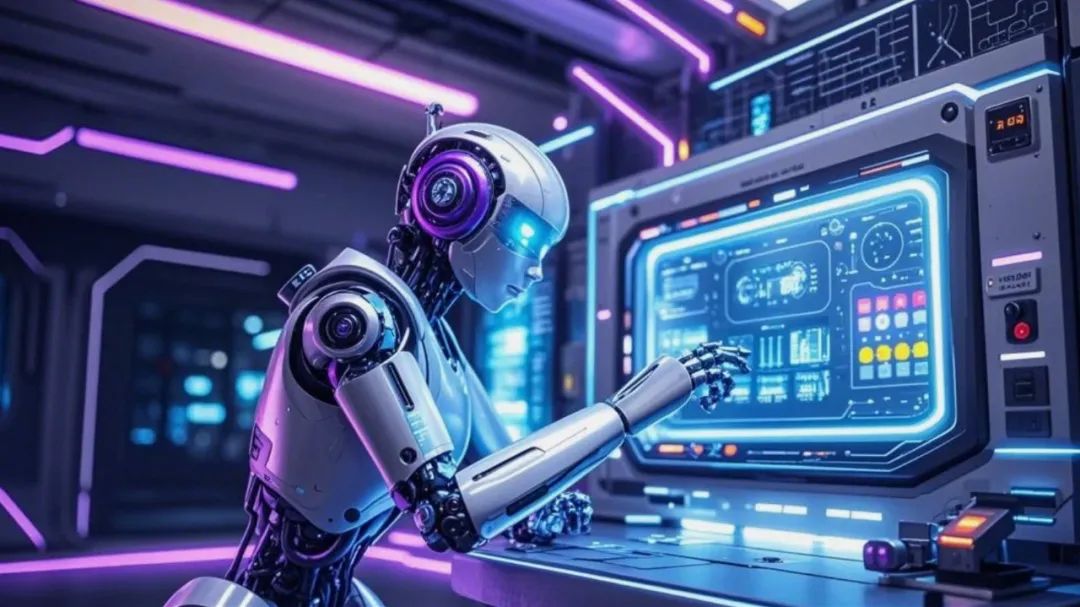
In the coming years, discussions on agents will intensify, yet the pressing need to address commercialization challenges remains paramount.
Author | Li Xiaodong
As the 2024 Global Tech Summit shifted focus from the "large model parameter race" to "agent implementation scenarios," the industry appeared to have made a collective cognitive leap. It became evident that the value of AI lies not in astronomical parameter counts, but in its ability to seamlessly integrate into the real world.
Over the past two years, advancements in paradigms such as Mixture of Experts (MoE) and neuro-symbolic systems have allowed agents to transcend "brute force training." Instead, they now approach human-level professional capabilities through a fusion of knowledge injection and logical reasoning. Tech giants and startups worldwide have invested heavily in AI Agents, fostering an illusion of imminent maturity.
This perception stems from the industry's subtle redefinition of "agents." In contrast to Marvin Minsky's ideal of "autonomous agents," breakthroughs in large models have made the window for AI application implementation increasingly urgent. While agents retain their ability to "perceive and take corresponding actions autonomously," they are now seen as a vital product form for AI implementation.
From Anthropic, Google DeepMind, and OpenAI to leading companies like ByteDance and Baidu, and newcomers like Kimi and Zhipu, firms are exploring how to leverage this technology to disrupt existing industry structures, making agents a powerful bridge from the lab to real-world scenarios.
However, most seemingly promising implementations are merely milestones in a long-distance race. Tesla's Optimus robot can sort parts but still requires human intervention during conveyor belt jams. Anthropic's Computer Use enables users to command Claude to operate a computer, but it only succeeds 15% of the time in complex processes.
These cases are not isolated. Currently, most agents operate in highly structured environments, while the complexity of the human world far surpasses laboratory boundaries. As we stand at the cusp of 2025, this technology, entrusted with the mission of "disrupting productivity," is still on the brink of its explosion.
Industry believers argue that with large models achieving technological enlightenment and computing power infrastructure gradually improving, agents are poised to unlock a market larger than the mobile internet. According to McKinsey and Gartner research predictions, by 2027, agents will penetrate most enterprise workflows, unlocking trillions of dollars in economic value. We are not witnessing a technological ceiling but a new starting line where technology, commerce, and society collide, and true transformation will reshape the rules amidst chaos.
01
The Eve of Agent Transformation
Many envision AI agents automating workflows. In fact, some enterprises began experimenting with rule-based systems years ago to handle simple tasks, like automatically answering customer queries based on a preset knowledge base.
Products closest to agents include rule engine-driven expert systems like IBM Watson and single-point interaction tools like Siri. However, these rudimentary programs, reliant on preset rules and simple decision trees, have limitations: They require engineers to write thousands of if-then rules for complex scenarios, and any slight business rule adjustment may necessitate a complete system rebuild.
A revolutionary breakthrough occurred around 2015 with the advent of deep learning technology, enabling AI to learn autonomously and adapt to its environment. Google DeepMind's AlphaGo, defeating the Go world champion in 2016, marked AI's transformation from a "mechanical executor" to a "strategy maker."
Agents, intelligent entities built on computer programs and algorithms, gradually gained the ability to self-iterate based on data. However, due to "insufficient algorithm generalization" and "fragmented scenario understanding," they hadn't reached full autonomous decision-making. AlphaGo's Go mastery couldn't be transferred to other scenarios, essentially still bound by limitations.
This changed with the emergence of large models.
In 2020, GPT-3 ushered in a new cognitive revolution for agents, embodying AI cognition generalization with models possessing hundreds of billions of parameters capable of understanding cross-industry terminology and business logic. Additionally, human-computer interaction evolved, allowing users to generate results through dialogue.
By late 2022, ChatGPT broke through, validating large models as "general cognitive engines." The following year, multimodal large models exploded, seen as agents' "coming-of-age." Models like GPT-4 and Gemini demonstrated cross-modal capabilities, enabling agents to initially coordinate human multi-sensory functions.
With continuous learning capabilities, AI Agents are expected to transcend tool attributes, becoming "digital employees" with commercial thinking—the rudiment of what's now understood as "enterprise intelligent assistants."
Simultaneously, large model API call costs dropped from $0.06 per thousand tokens for GPT-3 to $0.01 for GPT-4 Turbo, making agent deployment affordable even for small and medium-sized enterprises. McKinsey and other research institutions concluded that large models have driven a 60-80% reduction in agent deployment costs.
Agents' low entry barriers, high adaptability, and strong evolution have led many AI players struggling with commercialization to view them as a new breakthrough.
The ultimate vision for agents is to establish "enterprise cognitive hubs"—not mere command execution tools but core engines for knowledge precipitation, process optimization, and risk prediction. Previously hindered by technological fragmentation and cost barriers, large models' generalization, multimodal fusion, and cost reduction now offer the business world a chance to break through.
02
Industry Status: A Blend of Extremes
Anthropic CEO Dario Amodei predicted that within 2-3 years, AI might surpass humans in almost all tasks, with agents penetrating 90% of enterprise workflows within five years. Agents' rise reflects the market's bold bet on the "second generation of digital transformation." If 2000-2020 saw business process digitization, we now enter a new stage of "reconstructing business essence with agents."
According to CB Insights, global AI startup funding reached $42.5 billion in 2023. Gamma data shows that global AI industry financing exceeded 400 billion yuan in the past year, with a year-on-year increase of over 77%, with agent-related startup financing accounting for a significant portion.
However, the capital market's frenzy contrasts with industrial practice's caution. Various institutional surveys reveal that in 2024, only a few global agent deployment projects achieved profitability, with most enterprises grappling with "how to make AI understand business logic." This contradiction highlights the significant gap between agents transitioning from technology demonstrations to commercial closed loops.
Leading companies' technological exploration directions have diverged.
For instance, OpenAI's Sam Altman bets on "general agents," aiming to build a cognitive engine through GPT adaptable to any scenario. The newly launched "Operator" allows agents to take over user computer operations like automatically writing and debugging code, but its robustness remains to be seen.
Microsoft CEO Nadella chose deep embedding, integrating Copilot into products like Office and Teams, aiming to make agents the "invisible hub" of enterprise workflows. However, in complex scenarios like supply chain management, its agents have faced compliance crises due to the lack of industry knowledge base support.
Regarding agents' commercialization path, different companies present diverse strategies: platform infrastructure players led by OpenAI, Google, and ByteDance, and vertical in-depth players represented by Anthropic. The division between platform and vertical agent companies essentially reflects two evolutionary paths—technological inclusiveness and in-depth value.
OpenAI's GPTs attracted over 3 million developers in three months, with users creating various agents through natural language instructions. This "dialogue-as-development" model accelerated ecosystem expansion but raised concerns—nearly 70% of GPTs store agents have a lifecycle of less than 30 days, and tool proliferation has decreased users' willingness to pay.
Using an ecological platform to gather developers has been evident since the internet's early days, essentially a tech giant arms race. While platform players benefit from traffic and developer advantages, they face the paradox of breadth diluting precision. When Microsoft Copilot enterprise users complained about financial report misuse, OpenAI engineers admitted that "general models' professional scenario knowledge depth is less than one-tenth that of human experts."
The vertical path focuses on industry depth. To differentiate from OpenAI, Anthropic, in addition to releasing Computer Use, targets areas requiring high compliance and risk assessment, like finance and healthcare, providing "constitutional AI" constraints and satisfying customers' private deployments through the Claude API.
Unlike OpenAI's "general model + ecosystem expansion," Anthropic adopts a "controllability + industry adaptation" solution, leveraging technological advantages to meet the industry's growing demand for safe, precise, and customized AI services.
Focusing on quickly implementable sub-sectors and solutions has more practical significance for tech innovation companies. LangChain, a foreign AI tech company, surveyed over 1,300 enterprise personnel, revealing that over half use agents for research and summarization tasks, followed by personal productivity tools, customer service, code generation, and more.
In the past two years, various AI agent products have shown great potential across industries. Hebbia.ai, focusing on financial and legal document analysis, Sierra, customizing AI customer service for enterprises, and Sana Labs in vocational education, have all seen impressive growth.
Capital influx has soared these new players' funding and valuation. However, the market bubble has pushed some agents' Price-to-Sales Ratios (PS Ratios) over 50 times, far exceeding the SaaS industry's previous average. Sierra, established for less than two years, reached a $4.5 billion valuation, becoming one of the hottest agent startup investment targets.
Verticalization also implies scale ceilings. Gartner data shows that agent companies focusing on financial compliance have an average annual revenue growth rate one-third that of platform-based enterprises, with customer acquisition costs rising. Some tracks witness brutal internal competition, with 80% of resources spent on competing for 20% of key clients.
From platform-based to vertical, these paths' rivalry points to the industry's fundamental contradiction: While general agents' open ecosystem scales quickly but struggles with depth, vertical solutions offer high gross margins but see escalating replication costs.
In response, some companies have adjusted strategies. Anthropic opened the "constitutional rule customization" interface in the Claude API, allowing enterprises to implant internal compliance clauses. This "detachable verticalization" may herald the future agent market's final form: platforms providing basic cognitive engines, with vertical modules freely combining like App Store applications, ultimately reshaping business through the balance of openness, inclusiveness, and depth.
But these are still predictions.
03
Agents Still at the Starting Line
Turning our attention to agents, industry leaders have offered a more pragmatic perspective. Zuckerberg of Meta candidly remarked: "We tend to overestimate short-term advancements and underestimate long-term challenges – it could take another decade before agents truly grasp human intent." Huang Renxun of NVIDIA anticipates that "the genuine revolution will only commence when agents begin transforming corporate profit statements."
These two viewpoints, while seemingly contradictory – one cautioning against overestimation in the short term and the other emphasizing long-term revolution – share a common understanding of the current technical constraints and commercialization hurdles faced by agents.
While agents' natural language interaction abilities have surpassed grammatical barriers, deep semantic comprehension remains a challenge. In dynamic settings and cross-system collaborations, agents still exhibit various reliability issues. From a commercialization standpoint, many firms grapple with a cost-benefit imbalance. A Boston Consulting Group survey reveals that less than 20% of enterprise agent projects achieve the anticipated ROI, with most enterprises still in the exploratory phase.
When considering China, the landscape becomes even more intricate.
Initially, the development of agents in China and abroad did not differ significantly, but now the disparities are widening. Abroad, financing in the agent sector continues to surge, product capabilities are enhancing, and some super companies are emerging. In contrast, domestically, most efforts are still conceptual, reminiscent of the early SaaS industry.
According to the "2024 Artificial Intelligence Development Report" by the China Academy of Information and Communications Technology, numerous agent companies operate in fields like finance, healthcare, and manufacturing. However, due to high deployment costs and commercialization difficulties, the proportion of profitable projects in the enterprise market is minimal.
Behind this disparity lie differences in technological paths, industrial ecosystems, and business logic.
Currently, most agent products abroad are delivered via software custom development or subscription-based models, leveraging their SaaS heritage and mature software ecosystem. These agents meticulously replace traditional offline production and operational processes, with more replaceable human links, solving practical problems and possessing vast development potential.
Business development essentially aims to streamline traditional processes and minimize costs. When costs are significantly reduced, new models replace old ones. In contrast, domestic AI development isn't bolstered by a mature software ecosystem; rather, it faces an incomplete ecosystem lacking model libraries like Hugging Face, data processing platforms like Databricks, and standardized APIs, increasing integration costs for enterprises.
This situation necessitates China to address its software ecosystem deficiencies in AI. More concerningly, enterprise customers are accustomed to paying for "functional modules" but balk at premium prices for "decision-making capabilities." When head vendors' agent pricing exceeds customer expectations, churn rates can soar to 90%.
Therefore, by 2025, it is evident that while AI has evolved beyond a mere toy programming tool, the transformation of agents into productive forces is far from complete. It will not adhere to Moore's Law but will progress through trials, errors, and iterations.
This article is originally created by Xinmou.


